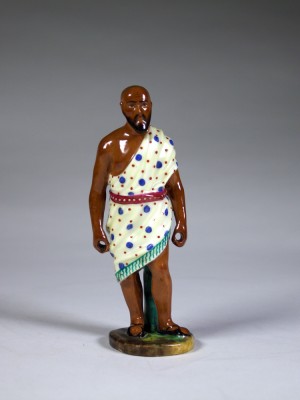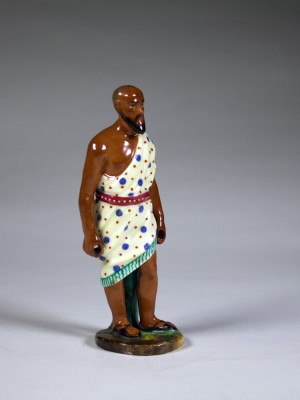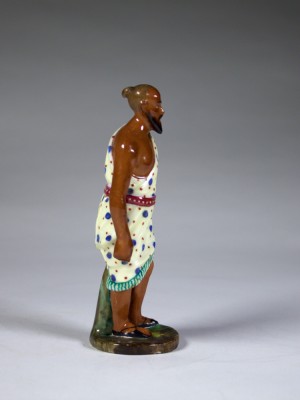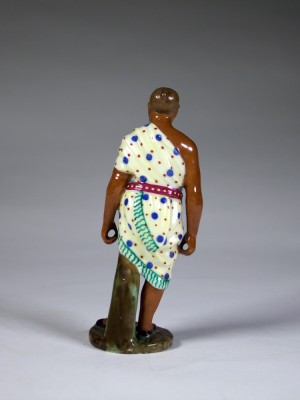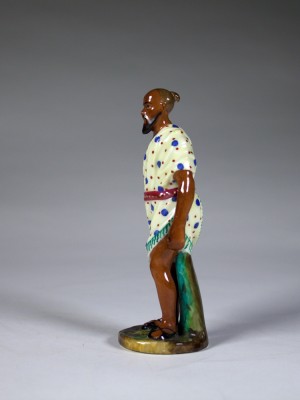I had no idea when I bought this intriguing figure that it came from the one of the Russian Private Factories of the 19th century. After having enjoyed it for a few years, I came across another in a book that was new to me at the time. There in “Porcelain of the A.M. Miklashevsky Factory”, a two volume set published in Moscow in 2010, was an example with the same holes in the hands but with different arm positioning and on a different base. Other than the arms, the figure looks to be from the same moulds. The enamelling is much the same except where mine has polka dots the other has stripes. It was noted in the book the title “African Man” was the Museum’s only and that the true subject was unknown without the object the hands were holding.
This figure caught my eye because it was an unusual subject. I believe it is a depiction of an ancient Egyptian slave. The seller mentioned that there was once a second piece with it — a Cleopatra in a litter. Don’t know if this was his memory or his imagination but it is a plausible explanation for the holes. Ancient Egypt fascinated people then as now.
A.M. Miklashevsky was a short lived but highly regarded factory. It was founded in 1839 by a Ukrainian noblemen of the same name on his ample ancestral estate. It was situated on the Kleven River bordering Russia. While Miklashevsky employed foreign experts from France to set up and manage the factory and free people from surrounding villages for some positions, his success relied on an unpaid serf labour. After the Emancipation Reform of 1861, an act that abolished serfdom in the Russian empire, the factory was unable to survive.
There is a certain perversity in using serfs to make slaves. The unpaid serfs that worked the Miklashevsky estate were in a similar position to the slaves of ancient Egypt. This figure and whatever accompanied it may have been meant to reinforce the status quo, those who own and those who are owned. These figures must have reminded those serfs who worked on them of their position in feudal society. This innocent figure could be a part of a subversive political statement. All I have to do is track down the unknown figure(s) that once accompanied this to see if it holds true. It could happen.
This figure is a couple centimetres shorter than the one in the book. The base on mine looks more hand built than moulded. The foot is a slightly warped porcelain ‘cookie’. Maybe it needed to be lowered to fit its mate. Maybe the moulded base was just too high. Maybe something shifted in the drying or was assembled a little differently in the companion piece. Potters are good at improvising solutions and having a lower hand built base was the solution here. Again, need to find the companion piece(s).More from this factory will be seen in upcoming posts.
Unmarked. 14.3 cm.

